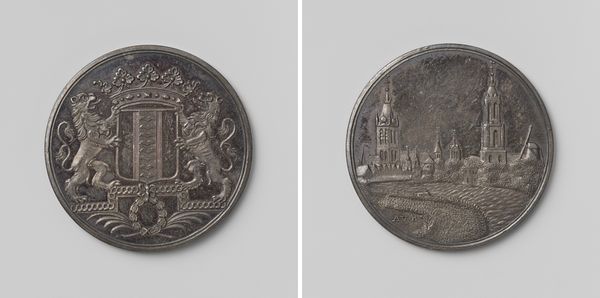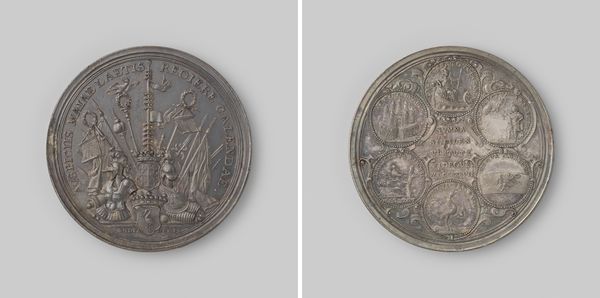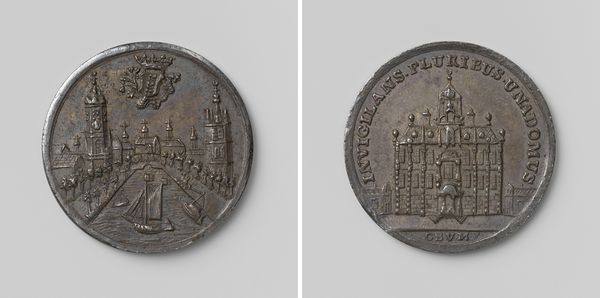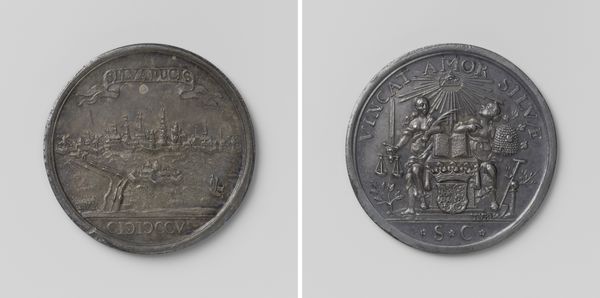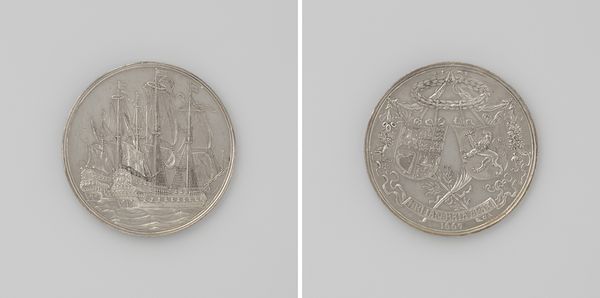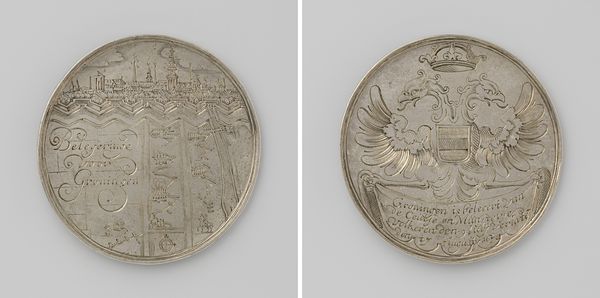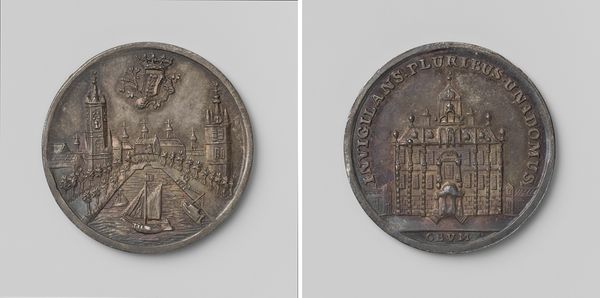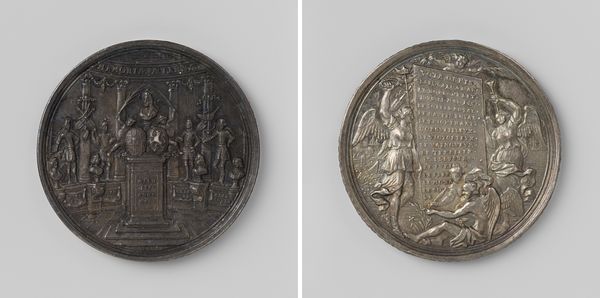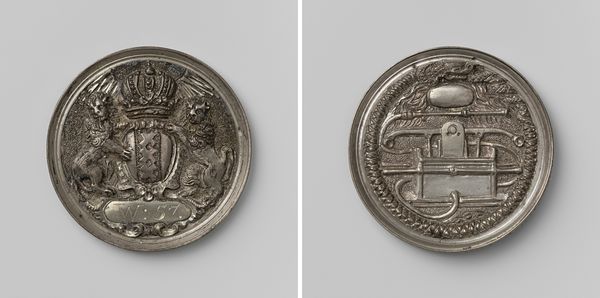
Viering van de kroning van Willem III en Maria te Rotterdam, penning geslagen op last van het stadsbestuur van Rotterdam 1689
0:00
0:00
print, metal, engraving
#
baroque
# print
#
metal
#
old engraving style
#
history-painting
#
engraving
Dimensions: diameter 3.3 cm, weight 12.01 gr
Copyright: Rijks Museum: Open Domain
Curator: This metal engraving from 1689, “Viering van de kroning van Willem III en Maria te Rotterdam” commemorates the coronation of William and Mary. It was commissioned by the Rotterdam city council. What strikes you most about this piece? Editor: Well, the duality is quite fascinating—it's a coin, but the intricate detail makes it feel grand, almost like a miniature monument. I’m interested in understanding how the artist achieved such detail on such a small, portable scale, what purpose did this type of object serve? Curator: A keen observation! Let’s think about this object as a material representation of power. It is produced by the city of Rotterdam and thus carries significance for that governing body, more than merely the royal coronation itself. Consider the metal, likely silver. Who controlled the mines? The craftsmanship involves highly skilled labor in die-making and striking the coin, demonstrating Rotterdam’s wealth and capacity. How does this shift your perception? Editor: I hadn’t thought about the means of production shaping the coin's message. The sheer act of minting signifies wealth. Given it was commissioned to celebrate royalty and displays Rotterdam, does the value in its material then give power to the governing body? Curator: Precisely. Furthermore, where would these coins circulate? Amongst wealthy merchants perhaps? Or gifted to important dignitaries? Considering the coin's likely audience deepens our comprehension. The council are reinforcing their status alongside that of the newly crowned monarchs, influencing their sphere. Editor: So it's less about pure artistic expression and more about a calculated display of Rotterdam's power through the manipulation of materials and labor. The Baroque style with all it’s grandiose visual elements, amplifies that reading as well. Curator: Indeed. Now, when you look at this piece, can you ignore the intrinsic connection between the object’s materiality, the labor involved, and the broader political context of consumption? Editor: Absolutely not. I'll certainly remember to look beyond the image itself and consider the processes that brought it into existence, and who it might have benefitted the most.
Comments
No comments
Be the first to comment and join the conversation on the ultimate creative platform.


